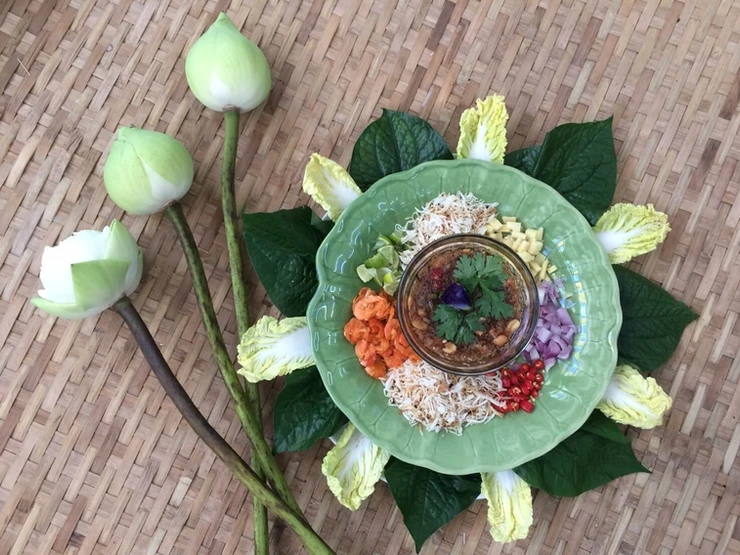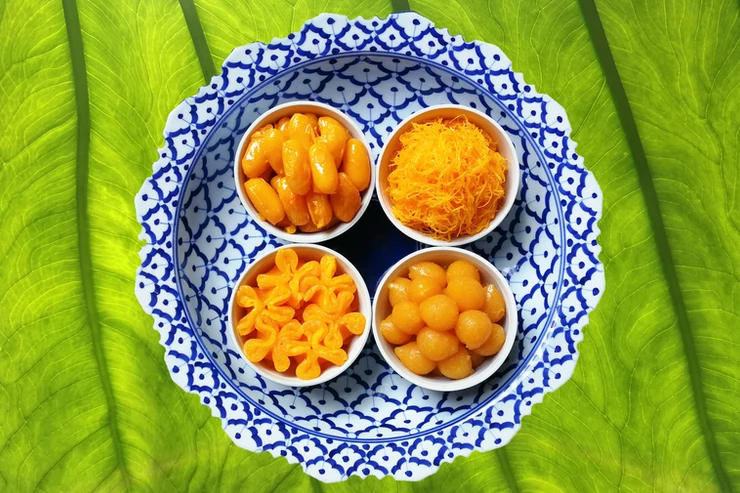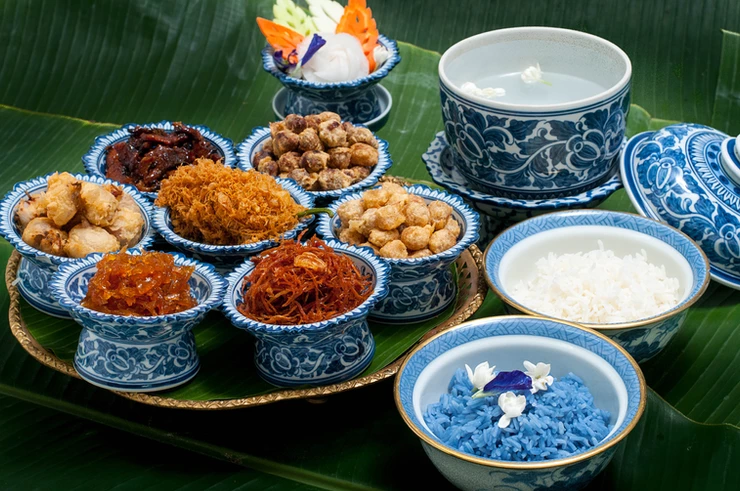Tuk Tuk Tours
Explore Bangkok by the iconic tuk tuk
Thailand is unique because it’s one of the last countries in the world that still has a very deep connection to the royal family and one thing that proves the strength of the connection is the Thai Royal Cuisine.
Back in the day, this branch of Thai cuisine was reserved for royalty, as the recipes are complex (some require many professional cooks to make just one dish) and the ingredients used to make them are expensive. Therefore, Thai Royal Cuisine became a luxury that no one outside the palace could afford.
However, as time went by, Thai Royal Cuisine became more widespread, as the ingredients that used to be reserved for the rich were made available to the public. This enabled the common people to eat the same dishes privileged members of society had enjoyed for generations.
In this article, we’ll tell you all about Thai Royal Cuisine and its origin in the hopes that you may find a new appreciation for it.

Royal Thai Food or Chao-Wang food has been around since the Ayutthaya Era, which began in 1351 and ended in 1767. While the royal family of the previous eras had their own cuisine, the traditional style originated during this time. In Thai, “Chao” means “the people of” or “the citizens of” and “Wang” means “palace.” Therefore, Ahan Chao-Wang means the “food of the people in the palace.”
During the Ayutthaya period due to close alliances with the Portuguese several sweet and beautifully presented desserts were introduced such as sangkaya (coconut custard), look chup (Thai marzipan) and tong yip, foy tong and tong yod (egg yolk-based sweets).

The process of preparing these dishes was kept a secret from the general public during those times, which is partly why so much of it was lost when Ayutthaya was sacked. The royal temples, libraries, and archive rooms were burned down by Burmese soldiers in 1767 when they attacked the city after a decade-long conflict between the two kingdoms. It’s not clear how much of recorded history was lost, as the damage to the city was so severe that it led to the fall of an entire kingdom until the new dynasty was established.
Fortunately, some parts of the process survived that attack, and it became Royal Thai Cuisine as we know it today.
Royal Thai Cuisine is known for its mild taste, lavish presentation, and a combination of different rare and expensive ingredients. Only the best and freshest ingredients will do. While some of them may be normal by today’s standards, you have to remember that back in the day, those things were so rare that only the wealthy were able to afford them. For example, khao chae or cold rice is something you would never find ordinary people eating a few hundred years ago.

This is because the rice must be soaked in cold, floral (jasmine) water. Back then, to make cold water you need to take a jar of water infused with the essence of fragrant flowers and place it in an underground stream to keep it cool. Afterwards, it will be poured on cooked white rice, which will be served with sweetened fried beef, stuffed bell peppers, pulled pork, and other condiments. No peasant would have the money or time to do all that, which is the reason why it was reserved for the rich.
Thai Royal Cuisine is typically served on a small table and people would have to sit on the floor to eat it. Like European meals, the food is served in courses and it’s speculated that this is because of the Western influence in the region during the 1600s and 1700s.
Impeccable presentation is essential. The fruits and vegetables that are presented on the plate would be carved with intricate designs, which adds to the extravagance and complexity of the cuisine. Dishes may also incorporate edible flowers and leaves which add both flavour and color. A classic example of this would be the use of pink lotus leaves.
The colors also play a significant role in how the dishes are arranged, as there needs to be a balanced combination between red, yellow, white, green, black, and brown. It was believed that these colors corresponded to specific organs and some elements of health and wellbeing. For example, red was associated with the heart, yellow with the bladder, white with bile, etc. There were also some off-season fruits and vegetables, as those are extremely rare compared to what they are today. Some fruits such as jackfruit (kanoon), lychee (ngoh), mangosteen (mung kood) and, of course, durian were extremely expensive and they would be served at the end of a royal meal.
Thai Royal Cuisine presents perfectly balanced food, without extremes in any particular direction,The primary flavors are sweet and salty, as they were designed to be easy to eat and to prevent bowel problems. Also food will not have a strong smell (although there are some exceptions – especially if it is a rare and expensive dish!). This is why some people find Royal Thai Cuisine too bland for their liking, but it’s typically because they haven’t tried dishes that were properly and expertly prepared.
Furthermore, there must be no hard objects in the dish, and everything that’s presented must be edible. This is to prevent the royal family from having to spit something out during a meal. It will also reduce the risk of choking or getting pricked inside the mouth.
In many cases this means the meticulous removal of every bone. However an interesting alternative to this principle would be the famous deep-fried duck, which is expertly cooked so that every little bit of bone is crispy and can be chewed with ease. Another famous Royal Thai Food is pu-lhon (coconut paste with crab meat and herbs). The smooth texture combined with the slight saltiness of the crab meat and sweetness from the coconut milk makes it go well with rice. Another dish we think you should try is stir-fried pork with pomelo (som-oh), which is a type of fruit in the citrus family. It’s closely related to grapefruit and has a similar flavor and texture.
At Expique our mission is to help people discover the real Bangkok and the local cultures. We do this through a range of experiences including Food Tours, Walking Tours and Tuk Tuk Tours
If you love food as much as us,
you will love our food tours in Bangkok
Subscribe to Our Newsletter
Subscribe to our newsletter to receive monthly news and tips about exploring Bangkok.